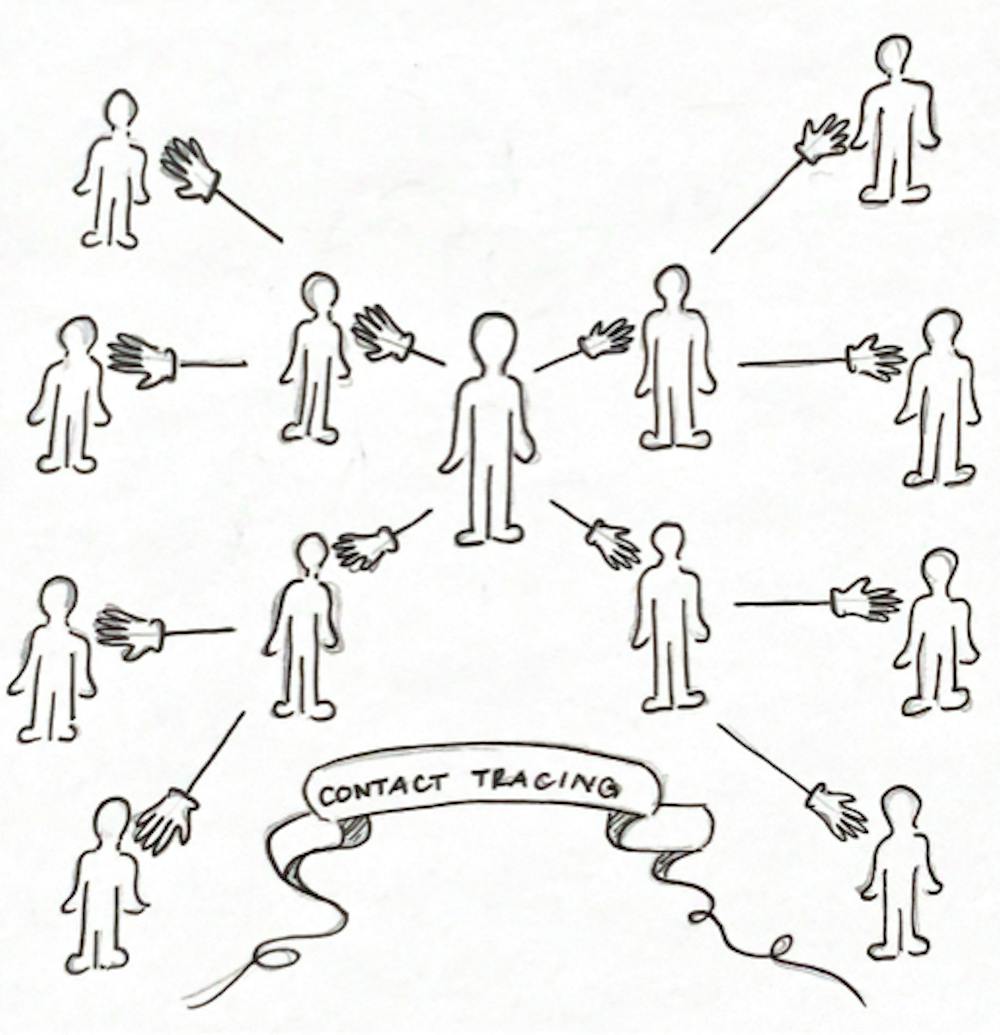While cases on Middlebury’s campus have remained low, the college — in partnership with the Vermont Department of Health (VDH) — has procedures in place to identify the close contacts of any student who tests positive for Covid-19.
Contact tracing begins immediately after a person tests positive for Covid-19, at which time they are asked to provide a list of people they were in close contact with during their infectious period. The college reports the case to the VDH, whose staff performs the contact tracing.
Close contacts are defined as individuals who have been within six feet of an infected person for more than 15 minutes, individuals who have had direct bodily contact with the individual or had them cough or sneeze directly into their face.
“Contact tracing with subsequent quarantine of contacts has been proven to be an effective mitigation measure for Covid-19 and other illnesses,” Sarah Ray, the college’s director of media relations, wrote in an email to The Campus.
In Phase Two of Middlebury’s reopening plan, students are recommended to choose up to four “close contacts,” people with whom they can relax social distancing guidelines. The college’s Return to Campus guide asks students to keep a list of their close contacts in a contact-tracing journal during Phase Two to aid contact tracers should an infection occur.
“Many individuals who know a person with Covid-19 often wonder if they are at risk for developing the illness, even if the Department of Health does not contact them,” Ray wrote. “Simply knowing a person who is a contact of someone with Covid-19 does not mean you are a contact. In most cases these people are considered a contact of a contact.” Contacts of contacts are generally not considered to be at risk for infection, according to Ray.
Contact tracers determine whether roommates and suitemates are close contacts based on living arrangements and the timing of illness, but there is no automatic assumption of infection for people living with an infected person.
Depending on the situation, students may quarantine in their own rooms or may be relocated to designated college housing for quarantine. Those who are determined to be close contacts are released when health officials deem that they are healthy and no longer at risk of spreading the virus, which typically takes 14 days or seven days and a negative viral test, according to Ray.
Contacts are informed that they may have been exposed through close contact with someone who is infected, but they are not told the identity of that person due to privacy concerns.
Students may also be asked to quarantine while contact tracing is underway. After a second student tested positive in the Day Seven round of testing, several others were placed under quarantine until contact tracers cleared them to return to campus life.

Tony Sjodin ’23 is a managing editor.
He previously served as community council correspondent, senior writer, news editor and senior news editor.
Sjodin is majoring in political science with a focus on international and comparative politics. He previously held internships with the Appalachian Mountain Club's Outdoor Magazine, political campaigns in Massachusetts and Vermont, and the U.S. Embassy in Costa Rica's Environmental Hub. Outside of class, he leads kayaking and hiking trips with the Middlebury Mountain Club.




